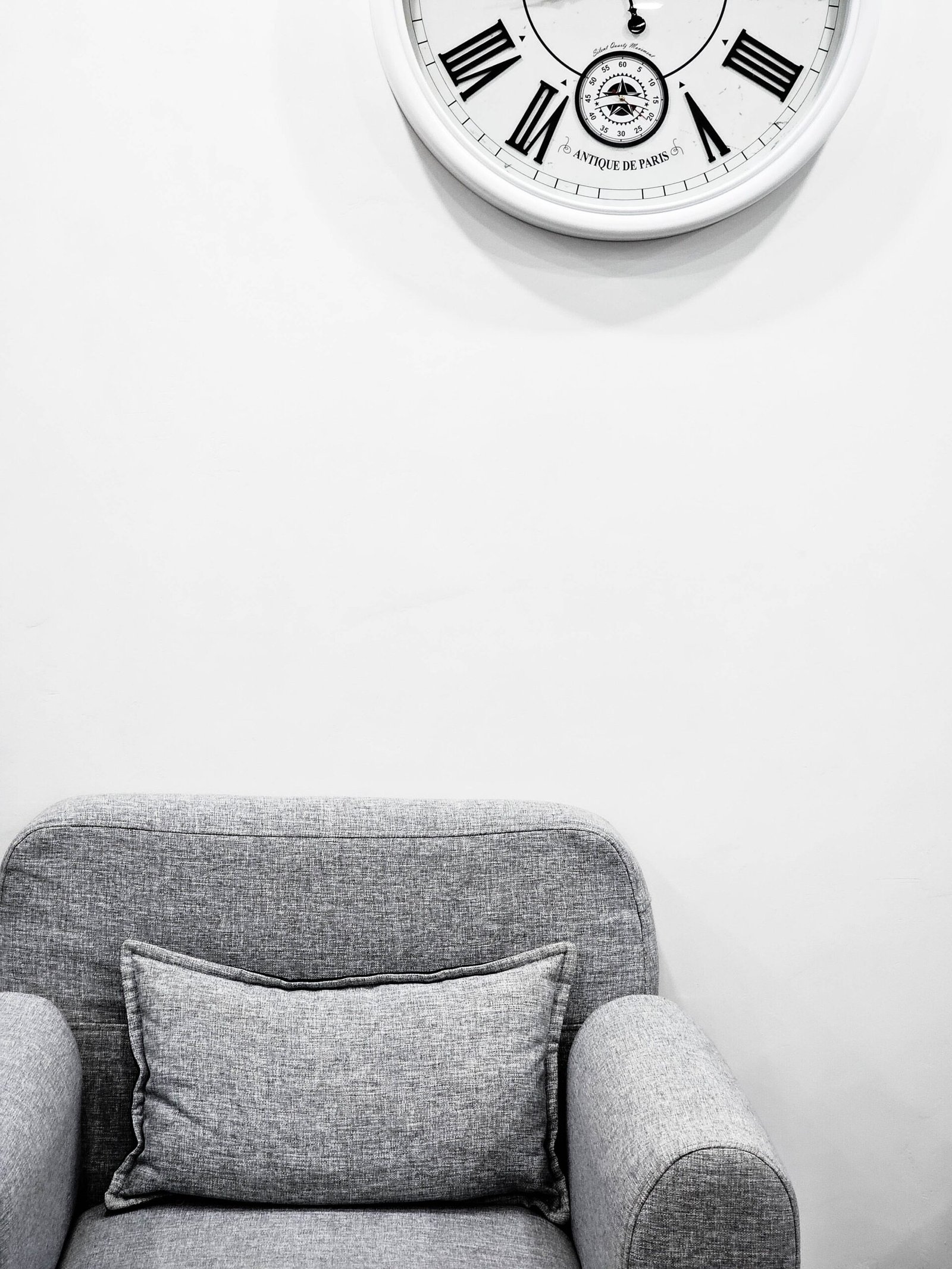
Finding relief from lower back pain can be challenging, especially when it comes to finding the best sitting position. The Ultimate Guide to Finding the Best Sitting Position for Lower Back Pain offers valuable insights and practical tips to help you alleviate discomfort and promote better posture. From adjusting your chair height to optimizing your sitting posture, this comprehensive guide provides you with the essential knowledge needed to find the perfect sitting position for optimal comfort and reduced back pain. So, get ready to bid farewell to that nagging ache and say hello to a more comfortable and pain-free sitting experience.
Understanding Lower Back Pain
Lower back pain is a common issue that can affect anyone, regardless of age or occupation. It can range from mild discomfort to debilitating pain, and understanding its causes and types is crucial in finding the best sitting position for lower back pain relief.

Causes of Lower Back Pain
There are numerous factors that can contribute to lower back pain. Poor posture, lack of exercise, and sitting for long periods without proper support are among the leading causes. Other potential triggers include muscle strain, herniated discs, and medical conditions like arthritis or sciatica.
Types of Lower Back Pain
Lower back pain can be classified into two categories: acute and chronic. Acute back pain typically lasts for a few days to a few weeks, often resulting from sudden movements or injuries. Chronic back pain, on the other hand, persists for longer periods, lasting more than three months. It can be caused by underlying health conditions or recurring injuries.
Effects of Poor Sitting Position on Lower Back Pain
Maintaining a poor sitting position for prolonged periods can significantly worsen lower back pain. Slouching or hunching over can strain the muscles and ligaments in the back, leading to increased discomfort. Additionally, incorrect sitting posture can put pressure on the spinal discs, exacerbating any existing issues.
Ergonomics and Lower Back Pain
Understanding the principles of ergonomics and applying them to your workspace can play a pivotal role in alleviating lower back pain. Ergonomics involves designing the workplace to fit the needs and capabilities of the individual, promoting comfort and efficiency.
Importance of Ergonomics
Ergonomics focuses on creating a harmonious relationship between the worker and the work environment. By applying ergonomic principles to your seating arrangement, you can reduce the risk of developing or exacerbating lower back pain. Proper ergonomics can help improve posture, enhance comfort, and prevent musculoskeletal disorders.
Choosing the Right Chair
Selecting the right chair is crucial for maintaining a healthy sitting position. Look for a chair that provides adequate support for your lower back and promotes proper alignment of the spine. Ideally, opt for a chair with adjustable features, such as height, backrest angle, and seat depth.
Adjusting Chair Height and Angle
To achieve the best sitting position for lower back pain relief, it’s important to adjust the height and angle of your chair properly. Adjust the chair height so that your feet are flat on the floor and your knees are bent at a 90-degree angle. The angle of the seat should allow for a slight backward tilt to support the natural curve of your spine.
Backrest Support
A supportive backrest is essential for maintaining proper posture and reducing lower back pain. Look for a chair with an adjustable backrest that can be positioned to align with the natural curvature of your spine. The backrest should provide adequate lumbar support and promote a neutral spine position.
Seat Depth and Cushioning
The seat depth of your chair should be adjustable to ensure that your back is fully supported without adding excessive pressure to your thighs. Additionally, consider the cushioning of the seat. Opt for a chair that provides enough padding to alleviate pressure points and enhance overall comfort.
Armrests and Lower Back Pain
While armrests may not directly alleviate lower back pain, they can play a role in promoting proper posture. Adjustable armrests allow you to maintain a relaxed position and reduce strain on your shoulders and upper back. Ensure that the armrests are at a height that allows your arms to rest comfortably, keeping the shoulders relaxed.
Sitting Posture Tips for Lower Back Pain Relief
In addition to ergonomic adjustments, adopting proper sitting posture is essential for finding relief from lower back pain. Here are some tips to help you maintain a healthy and pain-free posture while sitting.
Maintaining the Neutral Spine
One of the key elements of proper sitting posture is maintaining a neutral spine position. This means keeping the natural curvature of your spine intact and avoiding excessive rounding or arching. Imagine a straight line extending from your head to your tailbone, and try to align your spine with that line.
Sitting with Proper Alignment
Sit with your back against the backrest of your chair and your shoulders relaxed. Keep your head aligned with your spine, avoiding excessive forward or backward tilting. Ensure that your chin is parallel to the floor. Aligning your body properly while sitting can help distribute the weight evenly and reduce strain on your lower back.
Positioning the Hips and Knees
Position your hips slightly higher than your knees to maintain proper spinal alignment. This can be achieved by adjusting the height of your chair or using a footrest if necessary. Avoid crossing your legs, as this can disrupt proper alignment and put additional strain on your lower back.

Distributing Weight Evenly
To relieve pressure on your lower back, distribute your weight evenly on both hips. Avoid leaning to one side or sitting asymmetrically, as this can lead to muscle imbalances and increased discomfort. Sit with both feet planted firmly on the ground to promote stability and balance.
Utilizing Lumbar Support Pillows
If your chair doesn’t provide sufficient lumbar support, consider using a lumbar support pillow. These pillows are designed to fit the natural curve of your lower back and can help maintain proper spinal alignment. Place the lumbar support pillow between your lower back and the chair backrest for optimal support.
Avoiding Crossed Legs
While crossing your legs may feel comfortable, it can contribute to lower back pain by causing an imbalance in your pelvis. Crossing your legs puts strain on the hip joints and the lower back, potentially exacerbating any existing discomfort. Instead, keep both feet flat on the floor or use a footrest to promote proper leg alignment.
Alternative Sitting Positions for Lower Back Pain
In addition to finding the best sitting position, incorporating alternative sitting positions into your routine can alleviate lower back pain and provide relief from prolonged sitting.
Using a Stability Ball
Sitting on a stability ball can help engage your core muscles and improve balance, which in turn can alleviate lower back pain. By sitting on a stability ball, you are constantly adjusting your posture and activating your muscles to maintain balance. However, it’s important to note that a stability ball may not be suitable for everyone and should be used with caution.
Sitting on a Wedge Cushion
A wedge cushion can help tilt your pelvis forward, promoting proper spinal alignment and reducing pressure on the lower back. By distributing your weight evenly, a wedge cushion can alleviate strain on the back muscles and ligaments. It can be particularly beneficial for individuals who spend long hours sitting.
Kneeling Chairs
Kneeling chairs are designed to promote a forward tilt of the pelvis, reducing the stress on the lower back. By distributing your weight between the shins and buttocks, kneeling chairs help maintain the natural curvature of the spine and alleviate pressure on the lumbar region. However, it may take some time to get used to this sitting position.

Using a Recliner
A recliner can provide temporary relief from lower back pain by allowing you to adjust the angle of the seat and backrest. By reclining back, you can take pressure off your lower back while still maintaining proper spinal alignment. However, it’s important to ensure that the recliner provides adequate support and cushioning.
Standing Desks and Varied Positions
Using a standing desk can be an effective way to alleviate lower back pain caused by prolonged sitting. Alternating between sitting and standing throughout the day helps reduce pressure on the lower back and engages different muscle groups. It’s important to find a balance between sitting and standing to avoid excessive strain on the legs and feet.
Active Sitting and Dynamic Chairs
Active sitting involves using chairs that allow for movement, such as those with a rounded or pivoting base. These dynamic chairs promote small movements while seated, engaging the core muscles and improving posture. By incorporating active sitting into your routine, you can reduce the strain on your lower back and increase overall comfort.
Taking Breaks and Stretching
While finding the best sitting position is crucial for lower back pain relief, it’s equally important to take regular breaks and incorporate stretching exercises into your routine. These breaks help reduce muscle stiffness, improve circulation, and alleviate tension in the lower back.
Importance of Regular Breaks
Taking regular breaks from sitting allows your body to rest and recover. Continuous sitting can lead to muscle fatigue and increased discomfort in the lower back. Aim to take a short break every 30 minutes to stand up, stretch, and move around. This can help prevent stiffness and reduce the risk of developing back pain.
Stretching Exercises for Lower Back Pain
Incorporating stretching exercises into your breaks can help relieve tension in the lower back and improve flexibility. Here are some stretches that can provide relief:
Seated Forward Bend
Sit on the edge of your chair with your feet flat on the floor. Extend your arms forward, reaching for your toes as you gently bend forward from your hips. Hold the stretch for 15-30 seconds, focusing on lengthening your spine and feeling a gentle stretch in your lower back and hamstrings.
Spinal Twists
Sit upright in your chair with your feet planted firmly on the ground. Place your right hand on the outside of your left thigh and gently twist your torso to the left, using your left hand on the armrest or back of the chair for support. Hold the stretch for 15-30 seconds, feeling a gentle twist in your spine. Repeat on the opposite side.
Knee-to-Chest Stretch
While seated, bring one knee towards your chest, grasping it with both hands. Gently pull the knee towards your chest, feeling a stretch in your lower back and hips. Hold for 15-30 seconds before releasing and repeating with the other knee.
Piriformis Stretch
Sit upright in your chair with your feet flat on the floor. Cross your right ankle over your left knee, allowing your right knee to drop to the side. Gently lean forward, applying gentle pressure on your right knee to deepen the stretch in the glutes and piriformis muscle. Hold for 15-30 seconds before switching to the other side.
Other Factors Affecting Sitting Comfort
While finding the best sitting position and incorporating stretching exercises are important for lower back pain relief, there are other factors that can impact your sitting comfort.
Proper Lighting and Eye Level
Ensure that your workspace is adequately lit to prevent eye strain. Proper lighting reduces the need to hunch over or strain your neck, which can contribute to lower back pain. Additionally, position your computer monitor at eye level to avoid tilting your head forward or backward.
Computer Monitor Positioning
Position your computer monitor at a distance that allows you to maintain good posture. The top of the monitor should be at or slightly below eye level, and the screen should be positioned directly in front of you. Adjusting the monitor height and distance can reduce strain on your neck and encourage better sitting posture.
Footrests and Leg Position
If your feet do not comfortably reach the floor, consider using a footrest to provide support and promote proper leg alignment. Placing your feet on a footrest can alleviate pressure on the lower back and reduce strain on the legs. Keep your knees bent at a 90-degree angle and avoid crossing your legs.
Temperature and Clothing
Maintaining a comfortable temperature in your workspace can significantly impact your sitting comfort. Avoid sitting in a chilly or overly warm environment, as extreme temperatures can cause muscle tension and discomfort. Additionally, choose clothing that allows for freedom of movement and doesn’t restrict your sitting posture.
Maintaining a Healthy Weight
Excess weight can put additional strain on your lower back and contribute to discomfort. Maintaining a healthy weight through a balanced diet and regular exercise can help reduce the risk of developing or worsening lower back pain. Incorporate cardiovascular exercises, strength training, and flexibility exercises into your routine.
Regular Exercise and Strengthening
Engaging in regular exercise and incorporating strength training can help alleviate lower back pain. Exercises that target the core muscles, such as planks and bridges, can enhance the stability of your spine and reduce the risk of developing back pain. Additionally, stretching exercises that focus on the hips, hamstrings, and lower back can promote flexibility and reduce muscle tension.
When to Seek Professional Help
While implementing ergonomic adjustments and adopting a proper sitting posture can often relieve lower back pain, there are instances where professional help may be necessary.
Persistent or Severe Lower Back Pain
If you experience persistent or severe lower back pain that does not improve with self-care measures, it is important to consult a healthcare professional. They can assess your condition, determine the underlying cause, and recommend appropriate treatment options.
Accompanying Symptoms
If you experience additional symptoms alongside lower back pain, it may indicate a more serious underlying issue. Symptoms such as numbness, tingling, weakness in the legs, or loss of bladder or bowel control should not be ignored and should prompt immediate medical attention.
Consulting a Healthcare Professional
If you are unsure about the cause or severity of your lower back pain, it is always advisable to consult a healthcare professional. They can conduct a thorough evaluation, take a detailed medical history, and recommend appropriate interventions or treatments tailored to your specific needs.
Conclusion
Proper sitting posture and ergonomics play a crucial role in alleviating lower back pain. By understanding the causes and types of lower back pain, selecting the right chair, adjusting its height and angle, and incorporating alternative sitting positions and stretching exercises, you can find the best sitting position for lower back pain relief. Additionally, considering other factors such as lighting, monitor positioning, footrests, temperature, clothing, weight management, and regular exercise can further enhance sitting comfort. Remember, if you experience persistent or severe lower back pain, it is important to seek professional help for a comprehensive evaluation and appropriate treatment.





